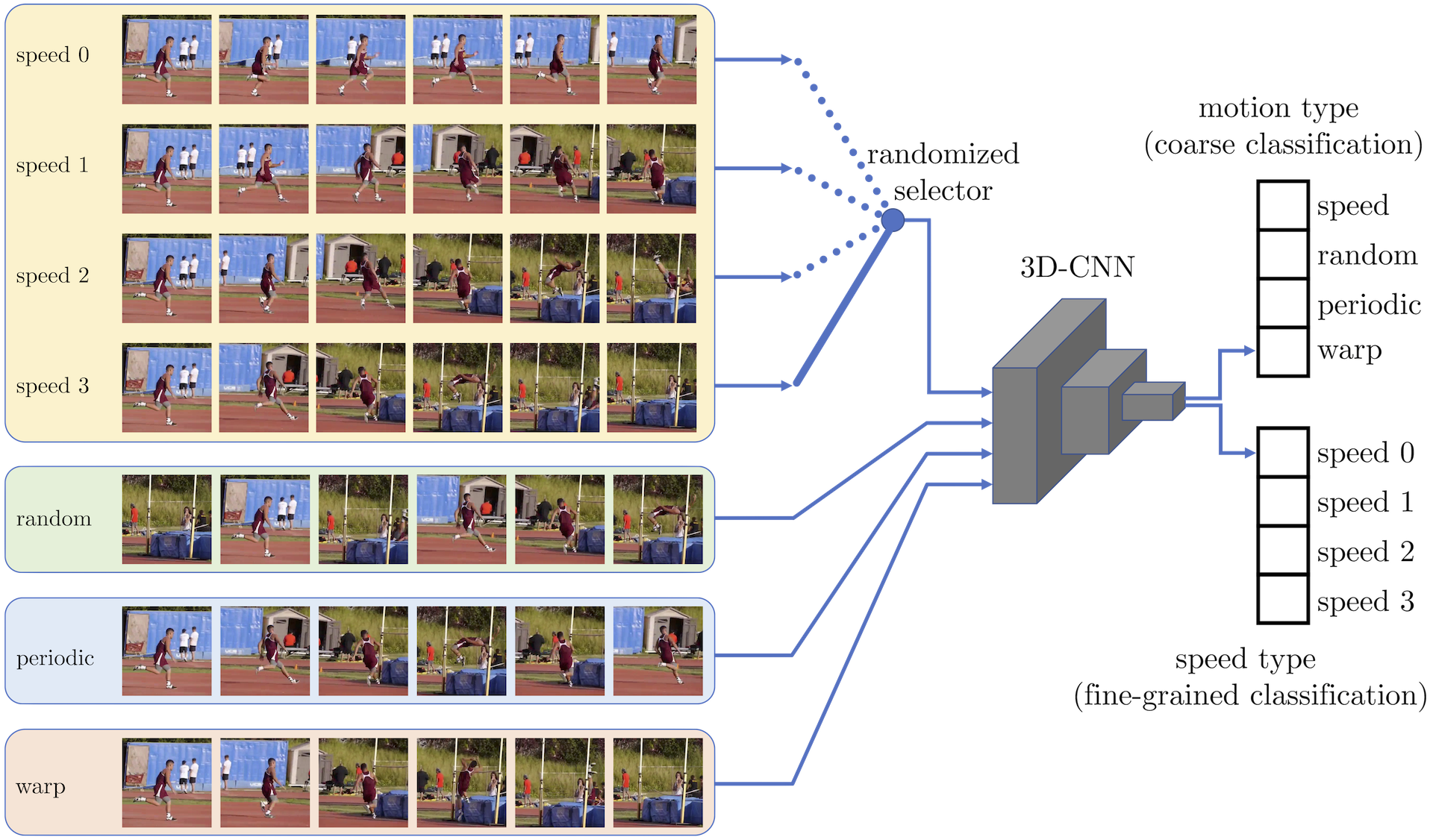Video Representation Learning by Recognizing Temporal Transformations [Project Page]
Simon Jenni, Givi Meishvili, and Paolo Favaro.
In ECCV, 2020.
This repository contains code for self-supervised pre-training on UCF101 and supervised transfer learning on the UCF101 and HMDB51 action recognition benchmarks.
Requirements
The code is based on Python 3.7 and tensorflow 1.15.
How to use it
1. Setup
- Dowload UCF101 and HMDB51.
- Set the paths to the data and log directories in constants.py.
- Run init_datasets.py to convert the UCF101 and HMDB datasets to the TFRecord format:
python init_datasets.py
2. Training and evaluation
- To train and evaluate a model using the C3D architecture, execute train_test_C3D.py. An example usage could look like this:
python train_test_C3D.py --tag='test' --num_gpus=2

